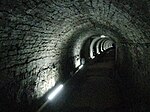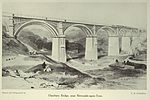Seven Stories
2005 establishments in EnglandArt museums and galleries in Tyne and WearBritish children's literatureCharities based in Tyne and WearChildren's museums in the United Kingdom ... and 4 more
Literary museums in EnglandMuseums established in 2005Museums in Newcastle upon TyneUse British English from August 2015

Seven Stories, the National Centre for Children's Books is a museum and visitor centre dedicated to children's literature and based in the Ouseburn Valley, Newcastle upon Tyne, close to the city's regenerated Quayside. The renovated Victorian mill in which it is housed has seven levels. It is the first and only museum in the UK wholly devoted to the art of British children's books. Their archive is housed in a separate building in Felling.
Excerpt from the Wikipedia article Seven Stories (License: CC BY-SA 3.0, Authors, Images).Seven Stories
Lime Street, Newcastle upon Tyne Battle Field
Geographical coordinates (GPS) Address Phone number Website External links Nearby Places Show on map
Geographical coordinates (GPS)
| Latitude | Longitude |
|---|---|
| N 54.974722222222 ° | E -1.5919444444444 ° |
Address
Seven Stories
Lime Street
NE1 2PQ Newcastle upon Tyne, Battle Field
England, United Kingdom
Open on Google Maps








